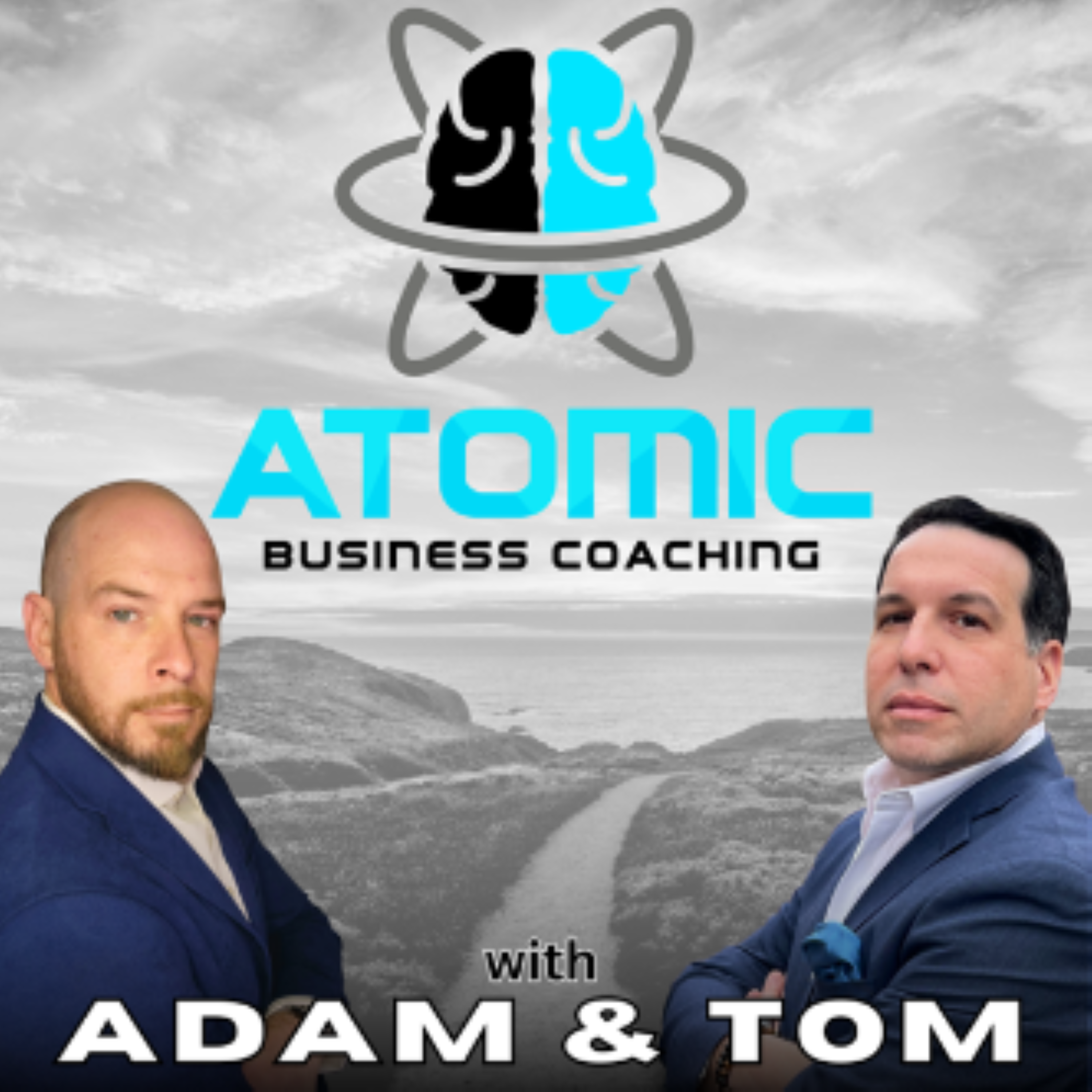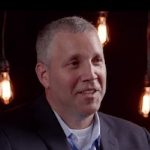Tom Marino and Adam Hurd – Transitioning From A Practitioner To Leader
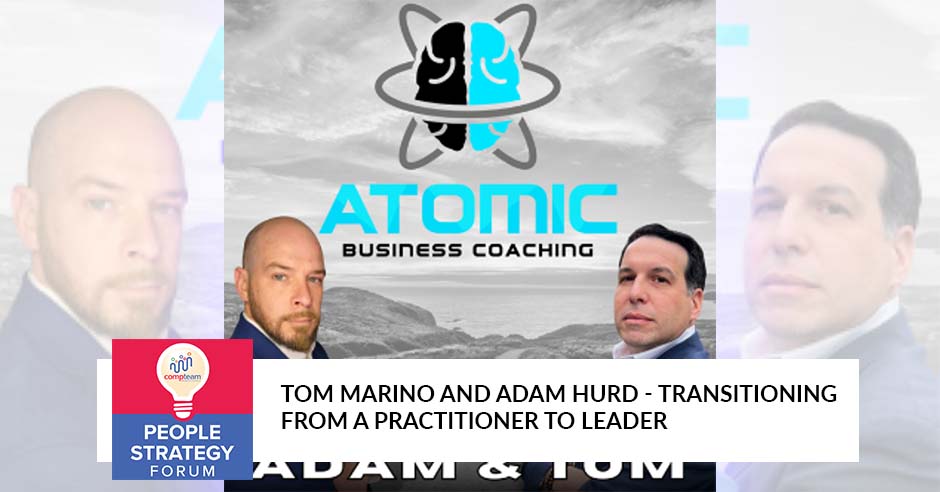
The best practitioner is not always a great leader because some simply don’t have what it takes. That’s what we will dive into this episode today! Tom Marino, a distinguished executive, and Adam Hurd, the Vice Chairman of the New York Advisory Group, share their insights about transitioning from a practitioner to a leader. They discussed the different aspects a great leader should have and the job of a leader to be successful in that position. Adam explains how women’s empowerment diversified ideas, which allowed everyone to be innovative. They also introduce their book, The Atomic Game Changer: Unlock the 9 Life-Changing Principles for Unparalleled Success and Fulfillment. Tune in to this game-changing episode and aim for unparalleled success and fulfillment with Tom and Adam.
—
Listen to the podcast here
Tom Marino and Adam Hurd – Transitioning From A Practitioner To Leader
We’re a show that guides leaders to elevate their game at the workplace for their people and create more people-centric workplaces because we believe that people are at the heart of successful organizations. Team members, well-being, rewards, and career development are essential to a happy, healthy, and highly productive workforce. In this episode, we’re getting towards a holiday season. We have Howard and myself here as hosts. Char Miller & Sumit Singla are preparing for the holidays. We wish them the best there, but we do have a couple of special guests that I want to introduce.
First, meet, Adam Hurd. With many years of financial service experience, he is serving as President of a flourishing New York planning firm as a Plan Fiduciary Advisor. Adam guides companies from their first million to multi-million dollar exits through his published books, business podcasts, and roles advising startups in Fortune 100 companies alike. Adam personifies the wisdom honed from varied business leadership. We’re glad to have him here.
We have joining with us is Tom Marino, a Health Care Executive and certified life coach holding a Master’s in Physician Assistant Studies. Tom champions the philosophy called Adrenalized Living. We’re going to learn a little bit more about that in the discussion. It promotes daily gratitude, embracing challenges, acting purposefully, and sustaining momentum.
From his books to hosting his own radio show and leading major health systems through transformations, Tom has proven leadership and a personalized growth lens that offers a valuable perspective for new leaders out there reading in. With their combined expertise, spending sectors in companies, and roles, Adam and Tom offer actionable leadership development for readers at any stage. Let’s read and learn a little bit more about effective leadership from Adam and Tom. The first piece that I would like to say is to welcome both of you to the show. Thank you for joining us.
Thanks for having us.
What we typically do when we start these discussions off is dig a little bit into your background. Let’s start with you, Adam. What got you in a place where you wanted to help business leaders succeed and your coaching of businesses overall?
Thanks for having us on. We love what you’re doing, which is to exemplify and help steward leaders cultivate themselves, their teams, and their companies. We appreciate having you us on here, and nice to meet you, Howard. How did I get into this and why do I have a passion for helping business owners or leaders to become into that? I knew exactly what I wanted to do when I was sixteen years old, which is extremely rare at any time at any age.
I was thrust into this program called The Academy of Finance. I got to go for two and a half years to Hofstra University in high school. You took college courses all about finance. I knew this was where I wanted to be. I ended up going to work for a bank and it was wonderful. I had my dream job. I became an Assistant Vice President for Citigroup and realized it was a dead end because my leader told me if I ever wanted to become a higher leader that I had to wait for that guy over there to die. I said, “What?” He’s like, “This is a lifetime job and role. You’ll never ascend past that person until they either leave or expire.” I said, “This is not for me.”
I started looking at other ventures. I ended up going to work for a company called MetLife. They were very different when I worked for them. Now, they’ve sold most of their assets off and they’re this group term insurance company now. When I went to work there, they were trying to change their culture from a life insurance company to a holistic advising company. I became a financial planner. I was part of the MetLife Premier client group. What I noticed was as I was helping people with financial planning, the people who gravitated to me most were business owners. My mission was to help people who were young families and small business owners. My best clients were the ones who were young families and small business owners.
They had a lot of new things they were going through in their life. They had to have leadership at home and in the business. This allowed me to explore all these new areas. I didn’t ever think that this was what I was going to be doing. I thought I’d be working on Wall Street, doing quant analysis, or something like that. I evolved into this position. People say, “Find what you love to do and you never work a day in your life.”
I look at it as, “Find what you are good at and you’ll learn to love it.” It’s easier to love what you’re good at than try to butt up against the wall and not be good at something and try to love it simultaneously. That led me to do more consulting, coaching, and things of that nature on my own and then I found Tom. I’m sure we can transition into how we built our company together. What I try to do in every aspect of my life is help change people’s lives by bringing confidence and clarity to decision-making.
Help change people's lives by bringing confidence and clarity to decision-making. Share on XIt’s powerful. It’s interesting. I’ve also had a similar background in the financial services industry. It’s definitely some similar type of experience overall. Tom, tell us a little bit about your past and how you got here.
I started as a physician assistant. I worked in healthcare for 22 years, up to retiring back in the summer of 2023 in July from healthcare entirely to move into our coaching business full-time. I’ve always been there to help people to solve problems and find solutions whether it was a medical problem or an operational problem as I held many administrative roles over the last fifteen years of my career working as a VP of Operations for one of the largest multi-specialty group practices in the state of New York where we had 36 locations throughout Brooklyn, Queens, Long Island in Manhattan and Staten Island.
I was the Regional Vice President of operations for the Brooklyn and Queens regions. I had 16 medical practices and 700 people in my portfolio. Every day I was always looking for what are new opportunities and ways to expand and improve the services that we provide to our patients because I believe that as a leader in the organization, I have a responsibility to continue to serve our patients to the best of our ability and provide as much for them. Along the way, you work long hours in healthcare. It’s pretty crazy at times. I found myself burning out back in 2017.
I left one job to go to another job to become a Chief Operating Officer. I could not stand that job after 60 days. I left, and I started my own healthcare consulting business. I took on a few clients and it was one of the best years of my life that happened for me. A moment of burnout and despair led to this incredible opportunity to take care of myself and take control of my own destiny. I started that consulting business and I was like, “I got to show other people how to do this. I have to show people how to take control of their life and destiny, fulfill their purpose, and find fulfillment in their life through the work that they do,” because I had lost that sense of purpose along the way and was looking for a way back to it.
I wanted people to experience the same fulfillment that I got to experience by taking charge of my own life. In 2019, I started a life coaching business mostly where I was working with people on career and relationship transitions. Whether they were changing jobs or deciding to open their own business, like if they were getting out of a bad relationship or divorce and looking for a new direction in their life and helping them through that process.
Back in 2020, Adam and I hooked up through a networking group that Adam had started called Long Island Networkers. After a while, we did a few events together. I was at a bunch of things. It was mostly on Zoom because it was 2020 and the COVID era. When we started to see each other in person, we got into great conversations about what each other did. At that point, I was coaching a lot of business owners on relationships, lifestyle, and all of this other stuff.
Adam was like, “I’m coaching people on their businesses and they need lifestyle help and mindset changes and all of that.” That’s how the two of us came together to form Atomic Business Coaching to bring both of our expertise where Adam works on confidence and clarity as he said and I work on mindset and momentum. I help people to get the right mindset. I help the owner of the business to form the right mindset to be able to take action, make better decisions, and gain momentum in their businesses and in their life to create this life harmony that Adam and I strive for everybody that we work with.
I have to ask, why the name Atomic?
I had someone figure it out. What are our names?
Adam and Tom Marino.
We were going to use our normal names and everything else. We had this epiphany together. It’s like, “Adam.” We originally had an atom as our logo and everything else. I mentioned it to a PR person. She’s like, “No one’s going to get Atom. What about Atomic?” I’m like, “Even better because everything we do is providing energy to our leaders. We’re giving them energy.” It happened to work out beautifully. Our logo is an atom, but the nucleus, instead of being what it’s supposed to be, it’s a brain that’s bifurcated because we work on two separate aspects. I work on the business and Tom works on the owner.
When you think about what you’re bringing to leaders, there’s that balance because a lot of times, and especially in the financial industry, we’re often thinking about generating wealth in addition to taking care of others and ensuring that fiduciary responsibility. Sometimes, that sacrifice to our own selves and our health. It’s great to see that both of you together and Tom brings a personal side, that health and wellness side and life coaching. It’s an awesome powerful combination.
What happened was when we worked with our first client, we did it for free to see as a beta test, “Does this work?” Once we did that work, we realized that you cannot have a good business, which is mainly what I work on without having a good owner. You can’t be a good owner without having a good business. Once we started working with our first client, we realized that it would be a shame for us to try to individually work on these things.
We meet with our clients weekly, I meet with them for an hour, and then Tom meets with them for an hour. we’re holistically approaching not just the business and the owner but the overall success of the company and the individual. Once we saw how it expedited their success, fulfillment in life, freedom, and what they could do each and every day with their families, vacations, and travel, we were like, “There’s no way we can ever go back.”
You hit on it, the keyword, freedom. A lot of us are seeking the real freedom that we want, the freedom to being with the people that we love and focusing on things that make a difference in our lives. I’m glad to know that’s the perspective there. One of the things I often find is either when practitioners are moving into a leadership role or if you’re a practitioner that wants to start your own business such as you gentlemen have done in your lives, there’s often a transition that needs to happen and a change in mindset. What are some of the common traits that you see that practitioners struggle with when they’re thinking about taking on those new leadership positions?
Before they transition, they have to make a decision, “Is this the right thing to do?” What I see many times is someone is a practitioner and they’re good at what they do then they decide, “I can do this on my own. I’m smarter than my boss. I know how to do these things. I have all the connections. I’m bringing in all the revenue. Why can’t I do this on my own?” They’re a fantastic practitioner, but they have no leadership skills.
You have to develop those before you can start a business. Here’s another mistake I see with established businesses. They want to promote someone to leadership and this happens in sales. I see it’s ubiquitous across all sales where they find the rock star salesperson. They’re like, “We’re going to make you the sales manager,” and then nothing ever works out because they’re not a good manager. They’re a good salesperson.
A fantastic practitioner may have no leadership skills. You have to develop those before you can start a business. Share on XAs you do this, transition or considering transition, you have to primarily say, “Do I want to be a leader or do I want to be the best practitioner possible and hire someone to lead me?” You’re allowed to own your own business and report to somebody else. Most people don’t understand that’s a possibility. Also, their ego gets in the way as well, but that’s something that you have to start with. Are you leadership material? It’s not a negative thing if you’re not. Not everybody is a leader. Some of the most wealthy people in the world are the best number two. The first is establishing who you really are and what you really want.
I’ll add to that shift in mindset that many people go through. A lot of people who start their own businesses are self-employed. They’ve created a job for themselves and it’s very difficult to go from that employee mindset to employer or owner mindset. It’s a very significant shift that needs to take place because you have to reformulate your entire life and how you approach it. You have to reformulate how you look at all of your relationships, how you manage your different relationships with your family, and what boundaries you need to now put in place to build a business.
You don’t stop working at 5:00 anymore. It’s a change from 9:00 to 5:00 to working all of the time and being the business owner all of the time. Adam and I were having a conversation earlier where he reminded me too of myself at times that I have to remember. I’m the business owner all of the time. I can’t just turn it off at 5:00. Just because I’m hanging out with Joe doesn’t mean that I stop being the business owner.
It is a significant mindset shift that takes place, but that’s where the decision of who you want to be in this business is important. Some people just want to be the practitioner. We’re working with a physical therapist. She is a phenomenal physical therapist and one of the top-notch. She gets athletes from that surgical table right back onto the field. She’s got a great program. She loves working with patients. She does not want to deal with insurance companies, denials, and front desk operations. She just wants to see the people.
We have to help her now put all of the structure in place to support that business so that she can be the practitioner because she’s choosing to be that rather than be the leader, but you’re going to need a leader of that practice to keep everybody on track and keep the vision moving in the right direction. Like Adam said, you don’t always have to be the one as the owner of the business providing all of that.
A lot of times, we see owners and they think they can do it all. They go down the road of trying to manage the entire business that they’ve had this brilliant idea to move forward with, but more often than not, we’ve seen them be terrible managers. How do you get them to the point where they realize, “This isn’t the right position for me to be managing the day-to-day operations?”
Inside of leadership alone and whether you’re doing this for yourself or somebody else, you have to allow people to make mistakes. When you make mistakes, it’s not a bad thing. You have to look at these mistakes as opportunities to grow, learn, and pivot. I don’t know who said this quote, but it’s like, “Success is standing on top of a pile of mistakes instead of laying underneath it.” It is maybe Dave Ramsey. I don’t know. It’s a good quote regardless of how we all think about Dave Ramsey whether or not you like him or not.
One of the keys to how we help them with that is when you transition to a leader, you have to understand from here on out that you only have one job. As a practitioner, you have many roles and responsibilities. As a leader, your one job is to help the company to generate revenue through development. That development is the development of sales opportunities, new products and services, your people, and processes.
That is your sole job from here on out. “How do I generate revenue?” Through the development of other people or things. If you try to go back to, “I’m going to do the work because at one time I was the best at it,” you are going to regress not only yourself but your company, people, and unfortunately then your clients.
One of the things that we subscribe to in considering how to develop leaders within their organization is this idea of conscious leadership. Jim Dethmer and a few people wrote this book around The 15 Commitments of Conscious Leadership. We embraced that conscious leadership approach when we were working with our clients as well. The very simple way that you have a conscious leader versus not a conscious leader is the difference between someone who victimizes themself, gets defensive, always has to be right, and turns that off to be able to be open to suggestion, curious and ask more questions of their people and get them to a place where they’re always learning.
That’s what we try to embody in every one of our clients. Be open and curious. Always be learning. Always see it as there’s always a potential opportunity. Don’t victimize yourself. Don’t be closed off. Don’t be that defensive person. To answer your question a little bit further, one of the things that a lot of business owners do when they wind up coming to us is it’s pretty easy sometimes to convince them that they’re in their own way because they’re stuck or they don’t know what the direction is forward.
They’ve become their biggest obstacle. It’s not so much that we have to convince them that they’re in their own way. They start to recognize it quite easily because their business is not going forward and they realize, “I have to be part of that root cause.” That’s when we’re able to help somebody the most. When we can get them to that point, we can take off and do tremendous things for their organization.
To build on this, I know that both of you released a new book. Can you tell us a little bit about that?
The new book is called The Atomic Game Changer. What this book is built on are these nine principles. When Tom was twenty-plus years in healthcare, he worked in doctor’s offices and hospitals. In every hospital, my wife runs the operating room for NYU. They have these standards that they have to adhere to. That’s what we look at as principles of standards in your life, things that you have to be beholden to and things that you have to make sure you adhere to in your life. What happens is you tend to veer off the track and you forget about that principle.

The Atomic Game Changer: Unlock the 9 Life-Changing Principles for Unparalleled Success and Fulfillment
What we created is a book that is used more as a reference. When you’re lacking one of these very specific areas, you can go back in and recognize what the symptoms are. We wrote it in a very clever way where it’s like, “Here’s your symptoms, diagnosis, antidote, and prescription.” It was dovetailing off of Tom’s previous experience. It worked out well for very systematically dealing with, “I’m lacking in this principle.”
The goal here is that when you are struggling with one of these areas, you look at it and we give you ten different tips for each chapter on what you could do. You pick one of them, do that now and you should be able to move forward and move through that latency of that standard and get back onto the track of progress. The way that we built these nine standards is we started to reflect back on all the people we’ve worked with over our decades of work. Who is the most successful? How did they get there? What did they embody? What characteristics did they have? What standards did they live by? As we wrote these down, there was so much crossover between these nine that we were like, “We have to write something about this and tell the world.” That’s a little bit about it for me.
I love the principles that we came up with in this book because they lead to success. We touch upon things like gaining clarity and being in your zone of genius and how you have to surrender to old ways so that you can formulate the different new habits that you need to be successful in running your business. We talk about vitality and how there’s the mental energy and the physical energy that is necessary for you as a business owner to do everything that you have to do and you have to be good here in your mind as well as in your body.
We talk about empowering and being able to delegate more to people. That empowerment is empowering other people to do what you need them to do so that you can focus on the priorities that you as the business owner need to be focused on. We talk about productive neglect, which is how you eliminate distractions in your life.
We talk about harmony. Harmony for us is one of our biggest goals for every single one of our clients. It’s our motto. It’s to give you a life of harmony. We destroy that whole myth of work-life balance and help you to see that work-life balance doesn’t exist and that it’s about the harmony and the fluidity of life. It takes patience. We say we have the principle of aggressive patience.
Aggressive patience is that thing where you have to trust the process, but you have to continue to do the work. You have to put the energy and the effort into everything that you do. It takes a lot of grit. If you don’t know how to persevere and you lack these principles, you struggle as the owner. The purpose of the book is not to be read continuously. It’s meant to be a desk reference for every business owner.
You can literally go to the book and say, “I feel like I’m struggling with perseverance. What was that chapter on grit? Let me read about that. Let me go do these daily reflections and daily ideas that I can address and take action on and come out of this place of stagnation because I’m lacking the grit that I need at this moment.” The goal of the book is to be there for every business owner every day to help them when they’re struggling with one of those principles.

Practitioner To Leader: The goal of The Atomic Game Changer is to be there for every business owner every day to help them when they’re struggling with one of the principles.
Readers, the nine principles are illustrated on the front of the cover as nine puzzle pieces that fit together to shape the atomic logo, which is brilliant. It’s the important part. I always like the concept of puzzle pieces because when we’re thinking about a particular solution, we often have to craft something that is going to be the right fit that is going to work to drive us forward no matter what type of company that we’re in.
That’s part of the reason why I love doing what I’m doing. I love taking a best practice and something that the big box firms would throw out there and say, “Put this in place and be like us or be the best.” It doesn’t work that way. You need to think about what is the best way to craft and shape this into what’s going to be meaningful in the lives of our people, customers, and leadership overall. It’s brilliant. Thank you. One thing I want to dig a little bit more is you are mentioning perseverance and grit. These are some words that certain generations have been plagued with as either being strong or not being strong. How do you see this as a key function or necessity in the emerging leader?
People play Buzzword Bingo all the time now, and it’s like, “It’s great. I’m a hustler. I’m going to grind,” and all these different things. At the end of the day, all that means is consistency. The problem with consistency is people think of it, in my opinion, the wrong way. They think okay, “Today, I’m going to do two hours of this. Tomorrow, I’m going to do two hours of this. The next thing, I’m going to do two.” It’s the same over and over, mundane, and boring.
It’s hard to be consistent with something that is super boring repetition. They have a word for that. It’s manufacturing. You can’t manufacture consistency. You have to become consistent. There’s a book Atomic Habits and it has no relation to us, but they talk about that if you want to have a certain outcome that you desire, first of all, you have to identify with that person. Once you identify with that person, you have to say, “What would a consistent person do?” That’s called process.
If you do the process of what a consistent person does, the outcome is you are consistent. It is identity, process, and outcome. What most people do is start with the outcome, “I want to be disciplined. I’m going to try to be disciplined today,” but you have no process and you don’t identify with that. When you’re looking at this repetition same thing each and every day, that is not consistency. You today may do something for 5 minutes and tomorrow 4 hours, and maybe take a day off, the day after that, do it for 3 hours, and the day after that, 15 minutes.
It means that you continue to persevere through doing it more and more. You have the aggregation of marginal gains by doing that. You get improvement not all at once and not through this systematic approach of repetition. Is that needle in certain areas? Yes, but usually not for leaders. Leaders have to be able to adapt to the environment and the changes and help the people that need it. You can’t just do the same thing over and over expecting different results.
I would like to dive into that a little bit more because, in my career, I’ve witnessed the emergence of the woman leaders and spent the brilliant to where they need to be. It’s about time that we’ve done that. Early on, I noticed that there was a bit of modeling that was going on. Women felt like they saw the image of a leader and they were trying to fit that mold. The authenticism fell apart in those early stages. It was my experience. I felt like women needed to be women and strong in their own skin and so forth, not the White male that was at the top of the house at the time. When you think about modeling and authenticism, how does that come together?
That’s a great insight there. I’ve had mostly women CEOs that I have worked for when I was in medicine. The majority of my bosses were women at one point. One of the things that I find working for them is you have those individuals that try to model with that very alpha male approach and then you have the ones that work on developing relationships with people. I believe that a lot of women have modeled relationship development better than men in the past. Alpha males tend to want results.
They’re this hyper-achievers or saboteurs. They want to go to the next thing and move forward, whereas a lot of women leaders are cultivating the relationship with the individual to get the best productivity and the work out of them. That’s a personal opinion. That’s my own opinion from my experience of working with several women CEOs. They’re very good decision-makers. One of the things that I was always impressed with was that they would take all this information, but then when it came to the decision, it was easy to make and they had the confidence to move on with that decision.
Women leaders cultivate relationships with the individual to get the best productivity and the work out of them. Share on XIt’s important that we work with a lot of women co-business owners. We have women business owners. One of the things that we find is that they are too focused sometimes on their relationship. We have to pull them into that leadership role, but the ones that are building the relationships are the ones that are much more authentic. Part of authenticity is speaking your truth, speaking very truthfully in every situation and the right situations, especially where you can’t be afraid to share what your truth is.
I do find that when people speak their truth, they become more authentic and trustworthy. The key is the level of trust that a lot of people see executive leadership in is based on how authentic you are. As we employ more and more of the Millennial generation, which has amazing skillsets but also very strong boundaries and they have certain expectations, one of the biggest things with them is to ensure that, as leaders, you are being trustworthy, truthful, and transparent.
The more authentic that you are, the better the situation is going to be for that employee. They’re going to stay with that company a lot longer than in the past where there is that cutthroat, “We’re being abused and disrespected. This guy is full of it.” Authenticity is not there. It led to more turnover. It’s a conscious leadership versus a not conscious leadership. Women tend to be more open to and curious about learning than those other male counterparts in the past.
One of the other things that is important to recognize is this. I like where you went there with there, Tom. We have an emergence of a new leader and we have both genders of power at the top of the organizations. Different ethnicities and groups across the world are becoming more diverse overall and we still have work to do. It’s created a new version of a leader, one that is more holistic and humanistic.
That is being tested because we’ve gone through this period of the pandemic, working at home, and the challenge and evolution of leadership that’s happened during that time, but now we’re faced with this terrible economy of 2023 and uncertainty in 2024. There has been some challenge to that mindset and is being tested. Do you see that in your clients struggling with being that humanistic and progressive and still now that they’re faced with the dollars and cents of potential layoffs and so forth?
I don’t know what my opinion on that is, but I can tell you from a perspective that I’ve seen a lot of different things. People talk a lot about diversity, either gender, race, skillsets, or these things. Empowering more and more women to rise to the top and different ethnicities throughout us to the top, what that does is give us a diversity of options, thoughts, and new ideas. At the core of leadership, it’s about innovation and not about invention.
Inventors will invent brand-new things, but innovators will take old ways of doing things and create a better, more efficient, and more effective way of doing it. The female leaders that I’ve seen who decided to blaze their own path instead of modeling what someone else has done and follow that route opened up the eyes of other leadership to like, “There’s a different way of doing this that is pretty effective. I never knew that.”

Practitioner To Leader: Inventors will invent brand-new things, but innovators will take old ways of doing things and create a better, more efficient, and more effective way of doing it.
That allows us all to see that there are more choices, options, and new ways of doing things and that innovation helps us all. More diversity for diversity’s sake is like, “Ah,” but for a purpose and an intention, which I am seeing like Tom said, we have a lot of husband-and-wife partnerships that are running companies and when we beat them up and dig into like, “What’s going on behind the scenes?” and they’re honest with us, the other one usually starts to adopt some of the traits from the other. They individually become way better, much stronger, better leaders, salespeople, and practitioners of what they’re doing. What I see from everything is this ubiquitous group across the industry.
It’s part of the job. Adam always talks to his clients on the financial planning side of things when he does that. He has always said that he’s more of a psychologist at times than a planner and financial advisor. As a coach, you feel that role naturally. I like to say that coaching is a great alternative to the stigma of therapy, especially life coaches. I perfectly endorse life coaches to help people with the normal run-of-the-mill stuff not to be a therapist, but it’s a great alternative to it.
We’ve talked before with some other speakers about people now in the workplace bringing the whole cells to the workplace where before you had a departmentalized, “This is the business side of me and I have a whole another side of me that no even knows about.” Things are changing. It is better holistically for everyone in terms of, “This is who I am. I have a life outside of the work environment.”
I know we’ve talked about the embodiment of what the new leader looks like. We’ve also spoken about what it takes for either people who are starting their own business or going into entrepreneurship or people who are practitioners going into a leadership role and what mind shift changes and so forth that they need to accomplish. As we wrap up here, can you provide an overview of those key traits that make a practitioner to a leader successful in organizations?
For myself, 1) Identify. Are you the type of person who can be a leader and wants to be a leader? 2) Realize that you now have one job. You’re one job okay is to generate revenue through development in many different areas, but you have to develop the whole company, the whole team, and even yourself, which is why we do coaching. The main thing in that mindset is that as you transition to this leader, allow people to make mistakes.
Your job as a leader is to generate revenue through development in many different areas, but you should develop the whole company, team, and yourself. Share on XYou don’t grow from being perfect all the time. You continue to be perfect. There might be way more beyond that. If you put the ceiling on perfection, there’s a big giant blue sky above you if you allow people to make mistakes because they’re opportunities to figure out better and bigger ways to do things. One thing that I maybe didn’t mention is that for most people who are trying to transition from that practitioner to a leader, what gets in their way, the biggest obstacle that I have seen is they are waiting for the money to make that decision instead of making the decision to make the money. A lot of times, your perception gets in the way of, “One day when I get here, then I can become the leader.”
The moment you get here, you have a whole new set of problems and responsibilities. You’ll keep kicking the can down the road. If you can identify, “If I am the person who can be the leader, I do want to be the leader. I can transition into this new role if I have one job and allow people to make mistakes and make the decision and the money will come.”
I would add to that. Practitioner to leader is the difference between doing things right and doing the right thing. If you as a leader could start to think about how you make things better for everybody at a bigger level, the practitioners only focus on what’s happening right there hands-on and doing what’s right to do at that moment. As you embrace leadership, it’s important to remain open, to constantly be learning, embracing feedback, and not to learn so you have more knowledge, but so that you grow in your knowledge, ability as a leader, and the skills that you need.
As you embrace leadership, it's important to remain open, constantly learn, and embrace feedback to grow in your knowledge. Share on XWhen you receive that feedback and ask for feedback, you have to be humble. You have to have a level of humility as a leader that you may not have as a practitioner to be able to get into that role even more. I know for myself that my entire career, I always ask for feedback along the way. Without that feedback, I would not be in this seat. I would not be here being able to speak to you and work with owners every single day to be their own leaders.
A key characteristic that I would say is focus on developing people. When you become a leader, you start to think about other people and, “How do I help that person to reach their full potential?” If you could become a true developer of people, that is the best leadership style in my opinion because that’s what we are here to do. Leaders are supposed to make leaders for the future. Leaders are supposed to create succession plans and have all of the things in place so that organizations can continue to move on and go through their phases and their development. If you’re not focused on developing your people, you’re not doing your job as a leader. That’s the key characteristic that I would say to take away from this.
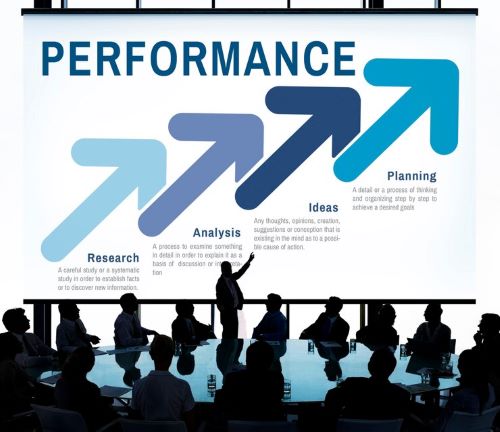
Practitioner To Leader: Become a true developer of people that is the best leadership style.
Thank you for that wrap-up. That was highly viable. Tell me how you are going to help our readers in 2024. What things that you have going on for 2024?
Our main mission for us is what we’ve identified and focused on who we are trying to help and who we are working with. It’s a term that is not very well known. It’s someone called a Purple-Collar Professional. Have you ever heard of that?
I haven’t. Tell me about it.
I didn’t create this name, someone else did. As we were starting to identify, “Who’s gravitating towards us? Who do we do the best work for?” it was these people. How you can figure out who they are? It’s an industry that has both blue-collar and white-collar aspects to what they do. Like Thomas mentioned, physical therapists have to write out reports, know the human anatomy, and have this professional education, but then they have to put their hands on patients.
We work with an architect who has to go and design amazing beautiful buildings and sit in front of the computer, doing CAD work and all these other things, but then he has to go on-site and help them to build this structure. We are finding that people who are in these types of industries usually came into it because they worked for somebody else and they were very good practitioners. They decided, “Let’s become an owner and do this.” They are good at the blue-collar and the white-collar work but have no clue how to run a business.
When you start to add these three main responsibilities or oversights, I got to make sure the blue-collar and white-collar stuff is getting done and, “I got payroll to handle. I need SOPs. What systems am I using?” that’s where, all of a sudden, their own success is their demise. They reach a level of success and they’re at this capacity where now they have to focus on the business and they can’t do the blue-collar. Sales go down. They have to focus on the white-collar so the business suffers and you’re 90 days in arrears on some of your bills.
We come in to help cultivate these types of people to choose, “Which of these areas do you want to focus on?” We had one of our companies who was the rock star in the blue-collar aspect and it was a restoration company. They went out firewater or mold damage to a home or a corporate building and it would get damaged. He was literally in there ripping up carpets, sucking out the water, and rebuilding the structure.
We took that person in 18 months from doing $600,000 to $3.3 million because they realized they should not be doing that because while they were good at it, they were much better at running the business. That gentleman doesn’t even do the white-collar. His wife is the CEO of the company now. He goes out there. He’s in business development. He develops the relationships, manages all of that, and brings in the opportunities. She leads the team and the blue-collar guys do all the actual work.
To have that growth in eighteen months for someone who was making $60,000 a year working for somebody else a few years ago was incredible. What we’re working on is trying to help those types of people and here’s why. That’s the future of small businesses in the United States of America because if you do blue-collar and white-collar, a machine AI cannot take that work away from you. You still need the human touch. AI technology can assist you in doing that more efficiently, but you’ll never remove the human.

Practitioner To Leader: AI cannot take the work away from your blue or white-collar job. You need the human touch. AI technology can assist you in doing that more efficiently, but you’ll never remove the human.
Thank you. Tom, do you have any final words?
I want to thank you for having us on here. This is great. We want to make sure that your readers that we had the privilege to be here, but you guys do such a great job all the time. I would encourage your readers and anybody who’s not subscribed to you to read this, subscribe, and follow you because the valuable work, the valuable advice that you offer, and the great guests that you bring on this show are valuable to people. People should benefit from that. Follow Sam and Howard here. Make sure that you follow them and give them feedback to make their show better so that they can produce a better product for you and continue to serve you in that way. Thanks for having us here.
Thank you so much, Tom and Adam. It was a pleasure having you on. Take care. Everyone, have a happy holiday season. We’ll see everyone next episode.
Important Links
- Adam Hurd – LinkedIn
- Tom Marino – LinkedIn
- The 15 Commitments of Conscious Leadership
- The Atomic Game Changer
- Atomic Habits
About Tom Marino
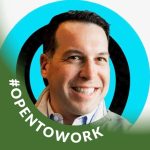 Tom is a distinguished healthcare executive and licensed Physician Assistant. He hold a Masters degree in Physician Assistant Studies (MPAS, PA-C) and is a Certified Life Coach (CLC). His transformative personal journey inspired him to become a coach, guiding others towards realizing their full potential. Throughout his career, Tom has always focused on developing others especially in his prior roles as Chief Transformation Officer at Harlem United, Vice President of Operations at AdvantageCare Physicians, and Corporate Director of Clinical Operations at Queens Long Island Medical Group. In these positions, he also drove organizational changes, improved patient care, and ensured regulatory compliance.
Tom is a distinguished healthcare executive and licensed Physician Assistant. He hold a Masters degree in Physician Assistant Studies (MPAS, PA-C) and is a Certified Life Coach (CLC). His transformative personal journey inspired him to become a coach, guiding others towards realizing their full potential. Throughout his career, Tom has always focused on developing others especially in his prior roles as Chief Transformation Officer at Harlem United, Vice President of Operations at AdvantageCare Physicians, and Corporate Director of Clinical Operations at Queens Long Island Medical Group. In these positions, he also drove organizational changes, improved patient care, and ensured regulatory compliance.
Beyond his professional achievements, Tom champions a philosophy called Adrenalized Living. This approach inspires individuals to express daily gratitude, embrace challenges, act purposefully towards their goals, reflect on progress, and sustain momentum. Alongside his career, he has authored three books. As the former host of The Tom Marino Show on 103.9 F.M. Long Island News Radio, he transitioned his skills to two podcasts. Tom’s proven leadership and unique perspective make him an influential figure in personal growth and success.
About Adam Hurd
 Adam, with his 24 years of experience in financial services, currently serves as the President of a successful financial planning firm in New York and holds the certification of a Plan Fiduciary Advisor (CPFA®), and Vice Chairman of the New York Advisory Group. He is also privileged to serve on the Small Business Advisory Council for the United States Congress. His current and previous experiences on the board of directors of multiple corporations have endowed him with a unique strategy for envisioning the big picture.
Adam, with his 24 years of experience in financial services, currently serves as the President of a successful financial planning firm in New York and holds the certification of a Plan Fiduciary Advisor (CPFA®), and Vice Chairman of the New York Advisory Group. He is also privileged to serve on the Small Business Advisory Council for the United States Congress. His current and previous experiences on the board of directors of multiple corporations have endowed him with a unique strategy for envisioning the big picture.
Adam has guided hundreds of companies from making their first million to witnessing some clients exit for over 90 million. His involvement with multiple Chambers of Commerce, ranging from Committee Member to President, has provided him with a unique perspective to assist start-ups and small businesses in identifying growth opportunities. Furthermore, Adam has offered valuable resources to Fortune 100 companies through his consulting services. His wisdom, encapsulated in three published books and a weekly business podcast that he co-hosts, continues to enlighten many in the business world.

